LEE KRASNER Free Space . Color screenprint, 1975. 494x660 mm; 19 1/2x26 inches (sheet), full margins. Signed and numbered 85/175 in pencil, lower center. Published by Transworld Art, New York, with the red ink stamp verso. A very good impression with vibrant colors. Krasner's (1908-1984) life and work is infrequently mentioned absent her famous husband Jackson Pollock's influence, though history has come to recognize her contribution to the Abstract Expressionist movement and her strength as an independent artist separate from her connection to Pollock. Krasner (1908-1984) was born in New York to a Russian Orthodox Jewish family. Her formal art training included instruction with Hans Hofmann perhaps one of the earliest and most influential Abstract Expressionist painters. Hofmann's use of bold color to portray meaning and spirituality and the tension he created by manipulating spatial relations and fragmentation became driving influences through Krasner's career. During the 1930s, Krasner supported herself on commissions from the Works Progress Administration's Federal Art Project. Unfulfilled by her work on figurative images for murals, Krasner continued to work on abstract work independently. Krasner was already an established artist and a founding member of the American Abstract Artists collective by the time she married Pollock in 1945. She had maintained that even if she had not married Pollock, she still would have been influenced by his work, like so many other artists. She had in fact introduced Pollock to many key figures within the New York art scene, including the De Koonings and the critic Clement Greenberg. She also encouraged and inspired his most avant-garde works. After moving with Pollock to the Springs, East Hampton, Long Island, Krasner developed her Little Image paintings. These critically acclaimed paintings combined ancient hieroglyphics, paint splatters and heavy impasto. Though she received favorable reviews, Krasner was her own worst critic, her experiments with new materials and techniques that did not meet her own high standards were destroyed. She then created collages from these destroyed works and from scraps of her husband's canvases, often tearing the sheets to create improvised shapes and rough edges. After Pollock's accidental death in 1956, Krasner appropriated his studio and began painting large-scale works in a fierce and aggressive style. She continued to constantly innovate and evolve, never fixed to a single medium or style. A collage-inspired work, offsetting different textures and edges, Free Space plays with organic shapes and the intersection of positive and negative space. The title recalls the open nature of the frontier and escape, ideas incorporated by her early teacher Hofmann and strengthened by her experience living in Rural Springs, Long Island. Free Space was created during the height of the first Women's Movement when Krasner's career was finally being recognized outside of the familiar "Mrs. Pollock" lens.
LEE KRASNER Free Space . Color screenprint, 1975. 494x660 mm; 19 1/2x26 inches (sheet), full margins. Signed and numbered 85/175 in pencil, lower center. Published by Transworld Art, New York, with the red ink stamp verso. A very good impression with vibrant colors. Krasner's (1908-1984) life and work is infrequently mentioned absent her famous husband Jackson Pollock's influence, though history has come to recognize her contribution to the Abstract Expressionist movement and her strength as an independent artist separate from her connection to Pollock. Krasner (1908-1984) was born in New York to a Russian Orthodox Jewish family. Her formal art training included instruction with Hans Hofmann perhaps one of the earliest and most influential Abstract Expressionist painters. Hofmann's use of bold color to portray meaning and spirituality and the tension he created by manipulating spatial relations and fragmentation became driving influences through Krasner's career. During the 1930s, Krasner supported herself on commissions from the Works Progress Administration's Federal Art Project. Unfulfilled by her work on figurative images for murals, Krasner continued to work on abstract work independently. Krasner was already an established artist and a founding member of the American Abstract Artists collective by the time she married Pollock in 1945. She had maintained that even if she had not married Pollock, she still would have been influenced by his work, like so many other artists. She had in fact introduced Pollock to many key figures within the New York art scene, including the De Koonings and the critic Clement Greenberg. She also encouraged and inspired his most avant-garde works. After moving with Pollock to the Springs, East Hampton, Long Island, Krasner developed her Little Image paintings. These critically acclaimed paintings combined ancient hieroglyphics, paint splatters and heavy impasto. Though she received favorable reviews, Krasner was her own worst critic, her experiments with new materials and techniques that did not meet her own high standards were destroyed. She then created collages from these destroyed works and from scraps of her husband's canvases, often tearing the sheets to create improvised shapes and rough edges. After Pollock's accidental death in 1956, Krasner appropriated his studio and began painting large-scale works in a fierce and aggressive style. She continued to constantly innovate and evolve, never fixed to a single medium or style. A collage-inspired work, offsetting different textures and edges, Free Space plays with organic shapes and the intersection of positive and negative space. The title recalls the open nature of the frontier and escape, ideas incorporated by her early teacher Hofmann and strengthened by her experience living in Rural Springs, Long Island. Free Space was created during the height of the first Women's Movement when Krasner's career was finally being recognized outside of the familiar "Mrs. Pollock" lens.



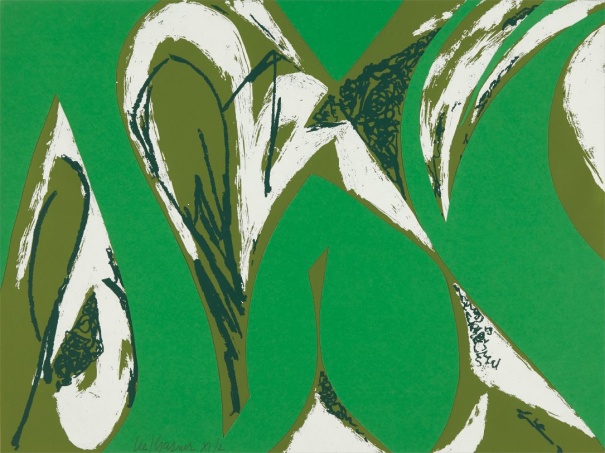




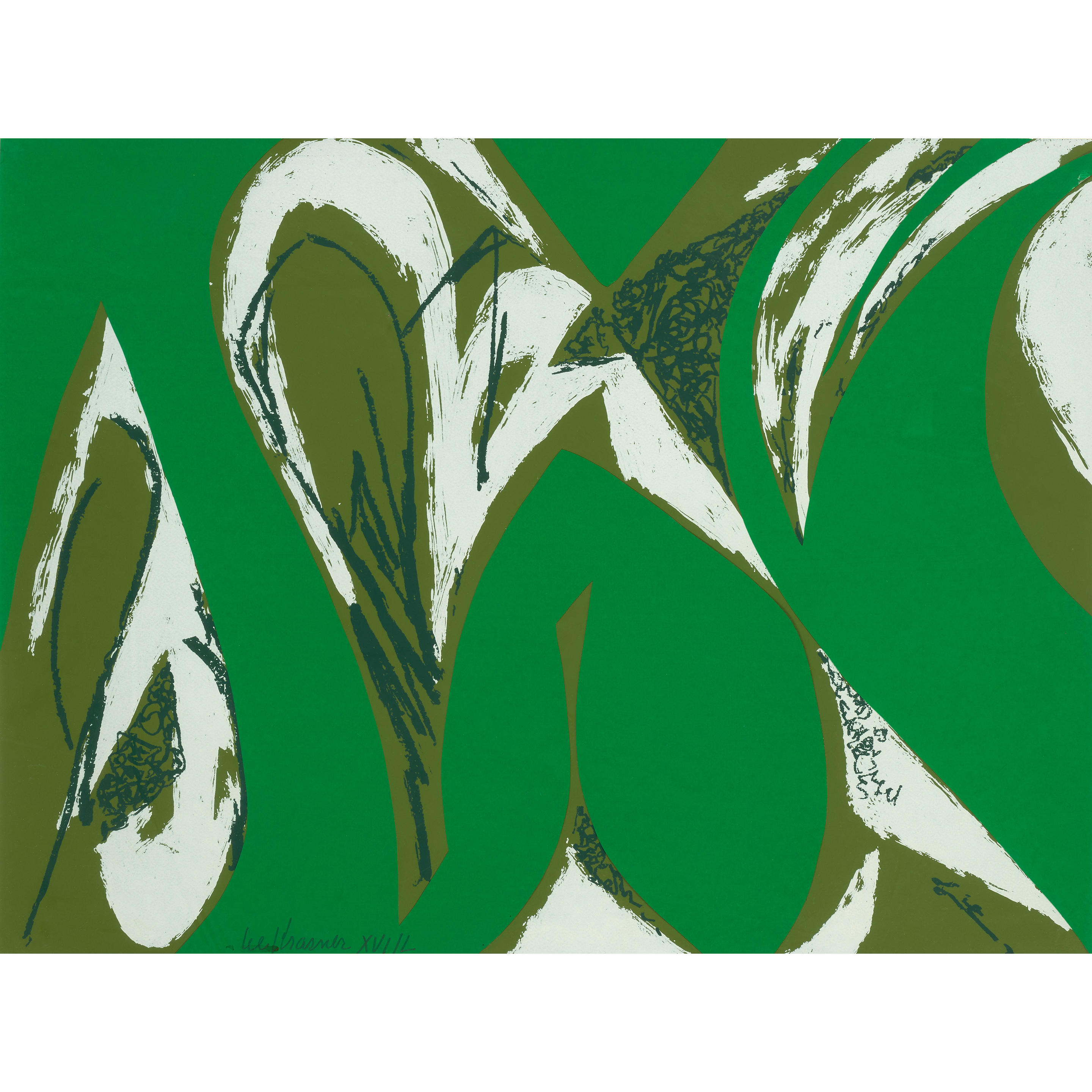
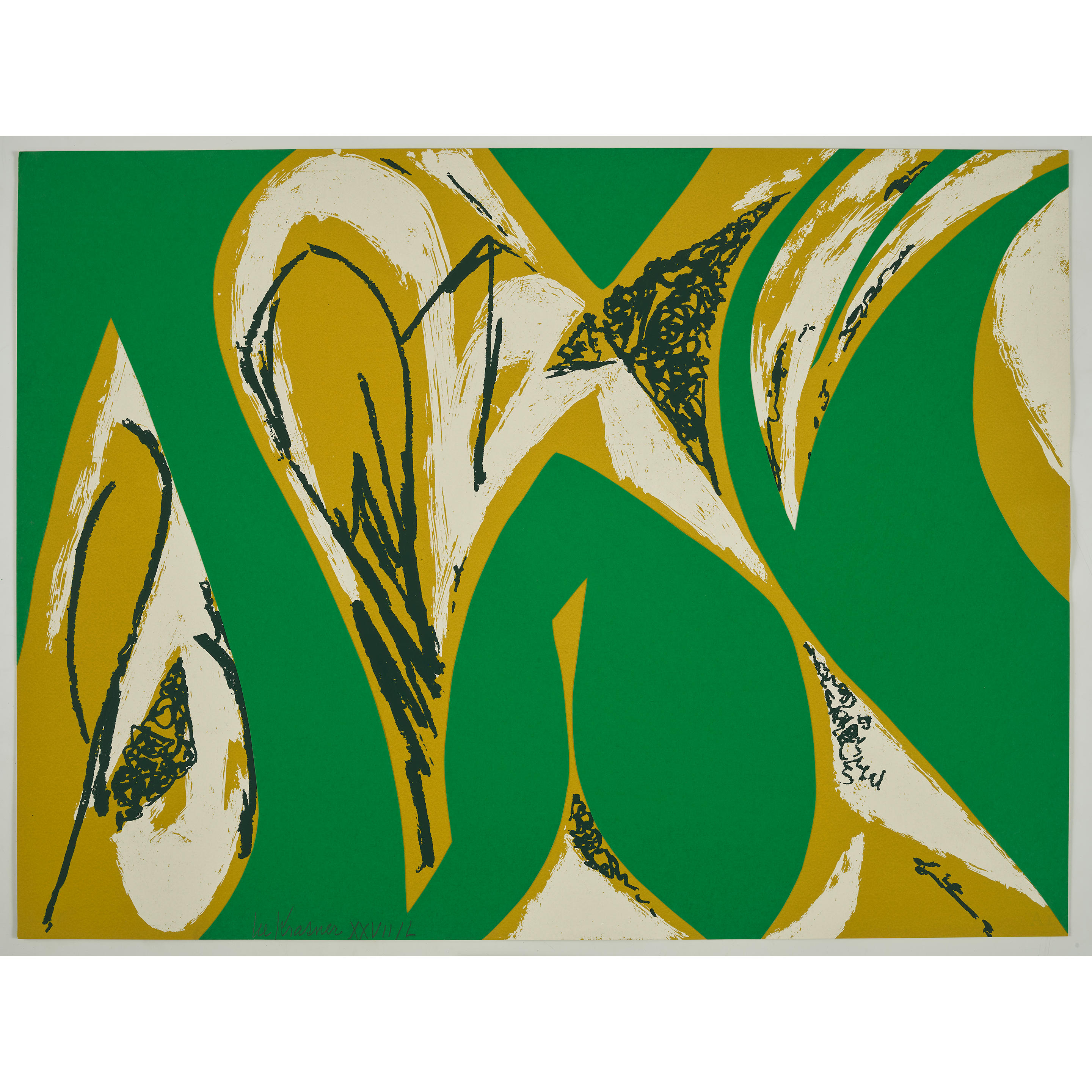

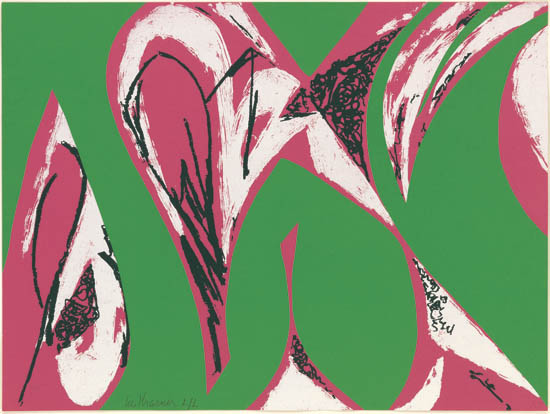
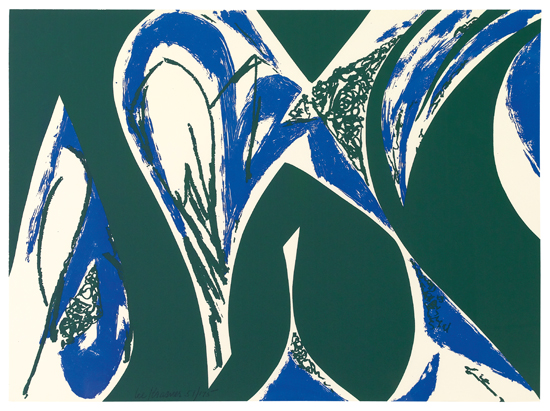
Testen Sie LotSearch und seine Premium-Features 7 Tage - ohne Kosten!
Lassen Sie sich automatisch über neue Objekte in kommenden Auktionen benachrichtigen.
Suchauftrag anlegen